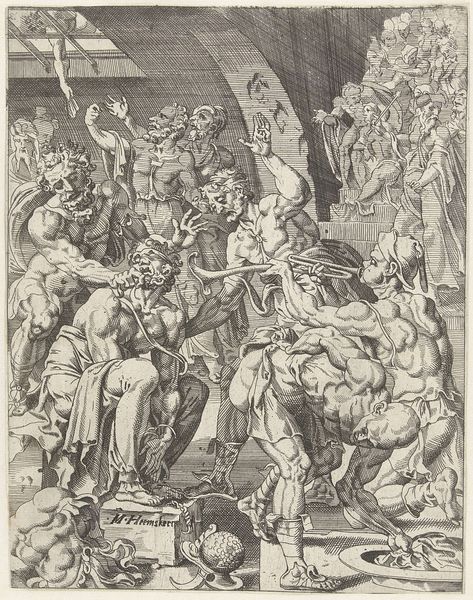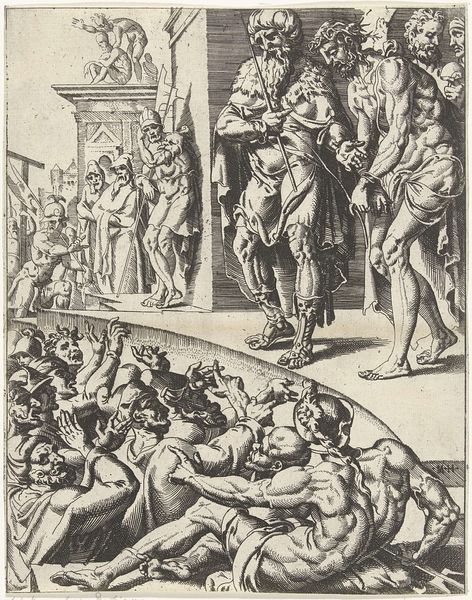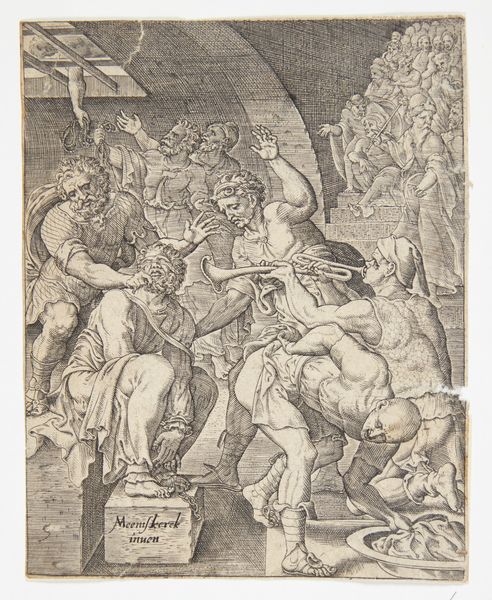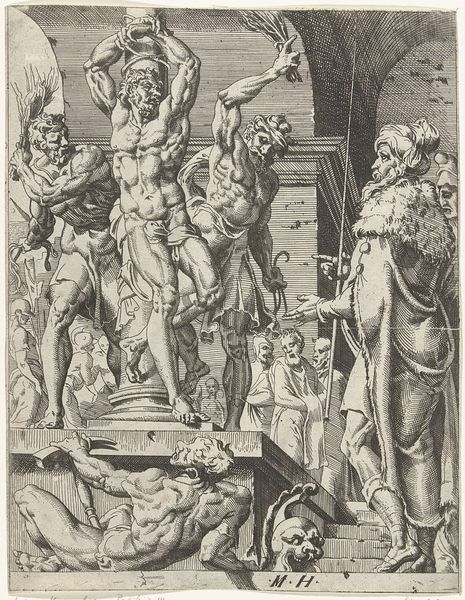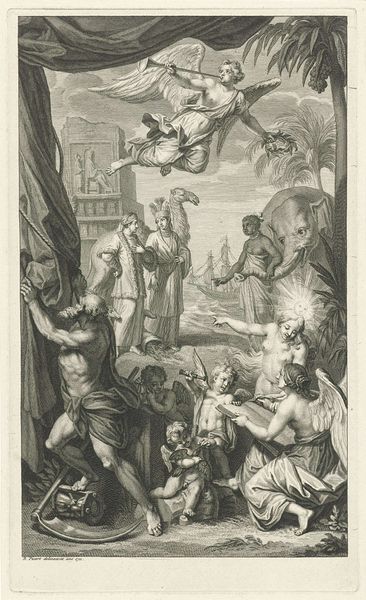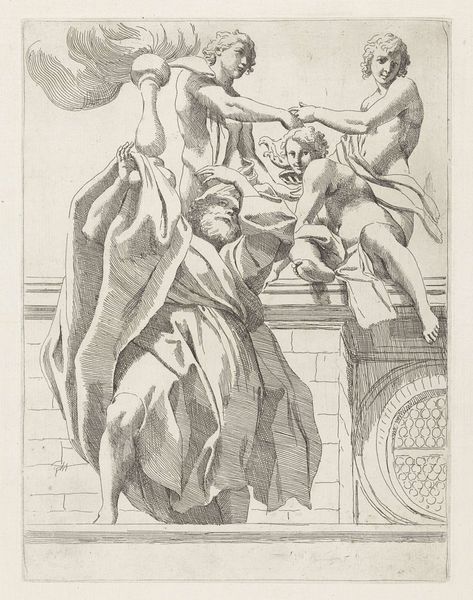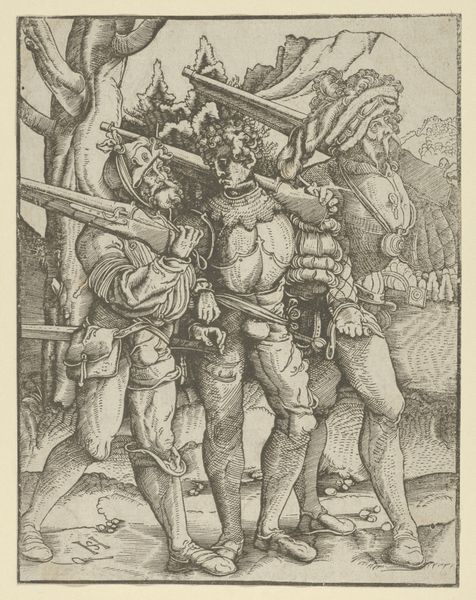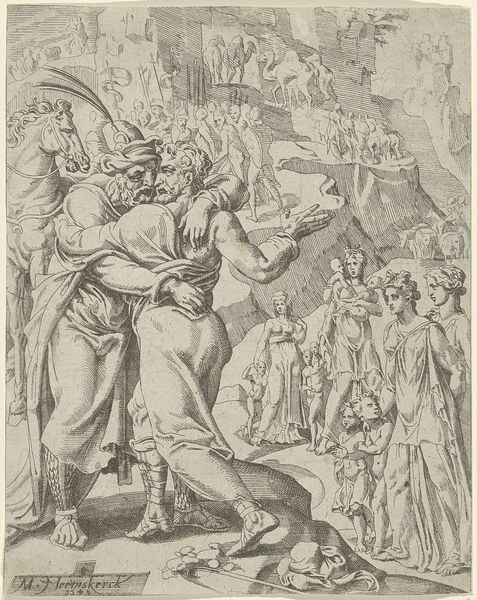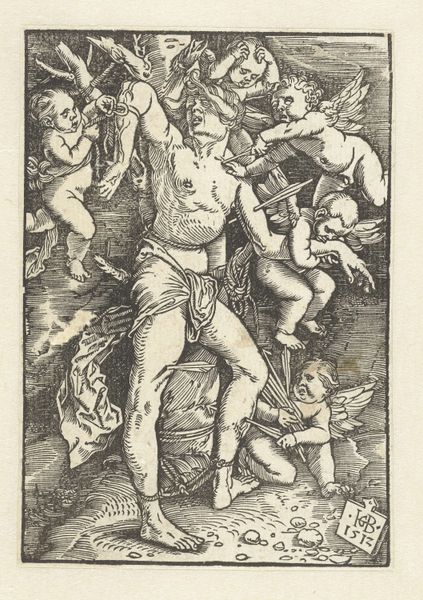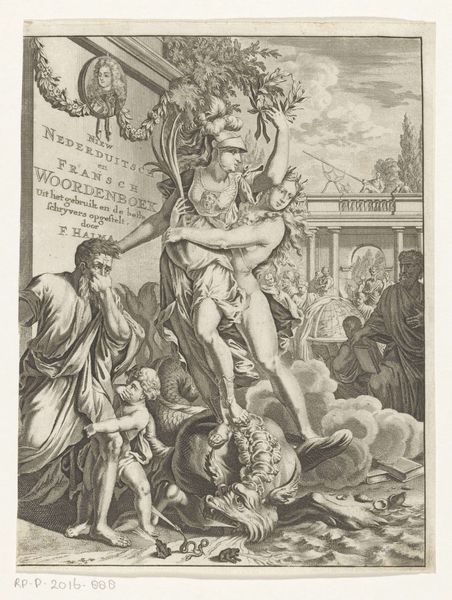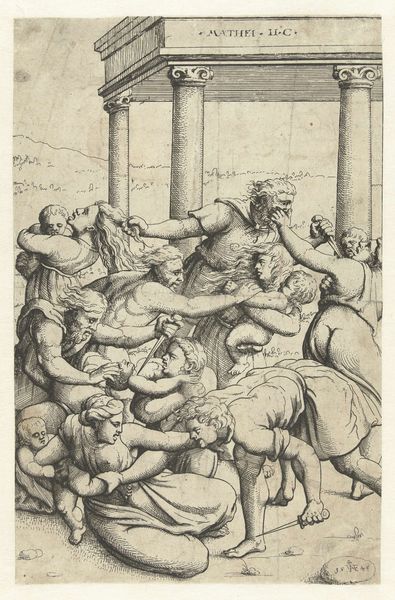
drawing, print, ink, engraving
#
drawing
#
ink drawing
#
narrative-art
# print
#
figuration
#
ink
#
history-painting
#
northern-renaissance
#
academic-art
#
engraving
Dimensions: width 195 mm, height 248 mm
Copyright: Rijks Museum: Open Domain
Editor: Here we have Dirck Volckertsz Coornhert's "Stoning of the Elders," made in 1551. It’s an engraving, currently held at the Rijksmuseum. The scene is incredibly dramatic – a crowd hurls stones at two muscular figures, who seem bound. There’s something both classical and brutal about it. What do you make of it? Curator: It's a potent image, isn't it? Consider the historical context: the Reformation was raging. The 'Elders' here probably reference a biblical story – perhaps Susanna and the Elders. The political and religious implications of representing authority figures being punished publicly were considerable. This image participates in a discourse that challenges power. What do you think this print would have *done* in 16th-century society? Editor: So, it's not just about the Bible story itself but about questioning authority figures more generally? Was this image something that would have been displayed publicly? Curator: Precisely. Prints like this circulated widely. Think of them as the news images of their day, but laden with theological and political commentary. The figures, while recalling classical statuary, are also subjected to a very public, brutal humiliation. This reflects anxieties about moral corruption but also offers a perspective— a veiled criticism —on the Church's own moral failings. Editor: It makes you think about who had access to these kinds of images and what discussions they might have sparked. So, the medium is almost as important as the subject matter in this case. Curator: Exactly. Printmaking allowed for widespread dissemination, fostering a public discourse previously unimaginable. This challenges conventional ideas of "high art." This wasn't just for wealthy patrons. It speaks to the political role of imagery itself, engaging with existing social power structures. Editor: This has completely changed how I see the artwork. Thanks! I learned so much. Curator: My pleasure! Remember to always consider what images *do,* not just what they represent. It can unlock so much about the artwork's impact and why it mattered.
Comments
No comments
Be the first to comment and join the conversation on the ultimate creative platform.
